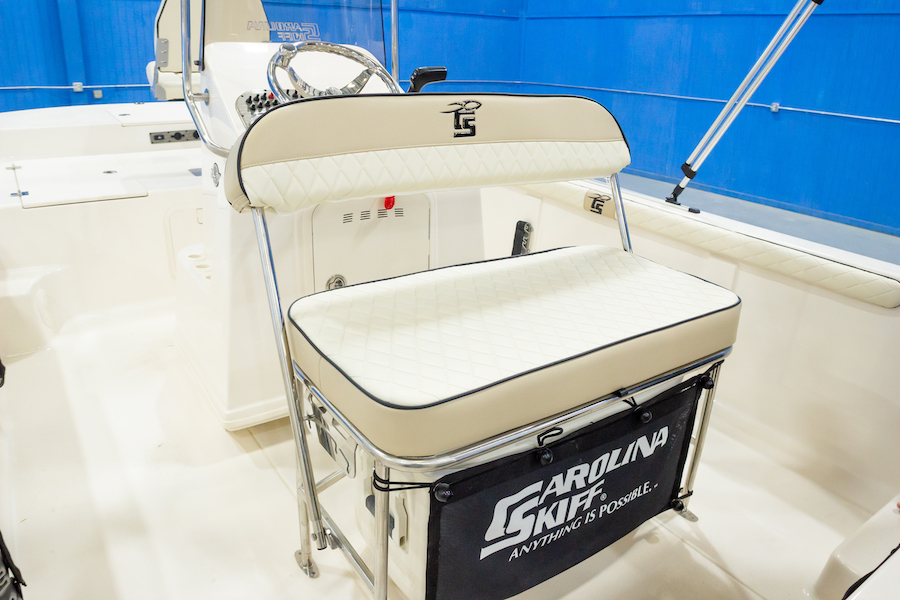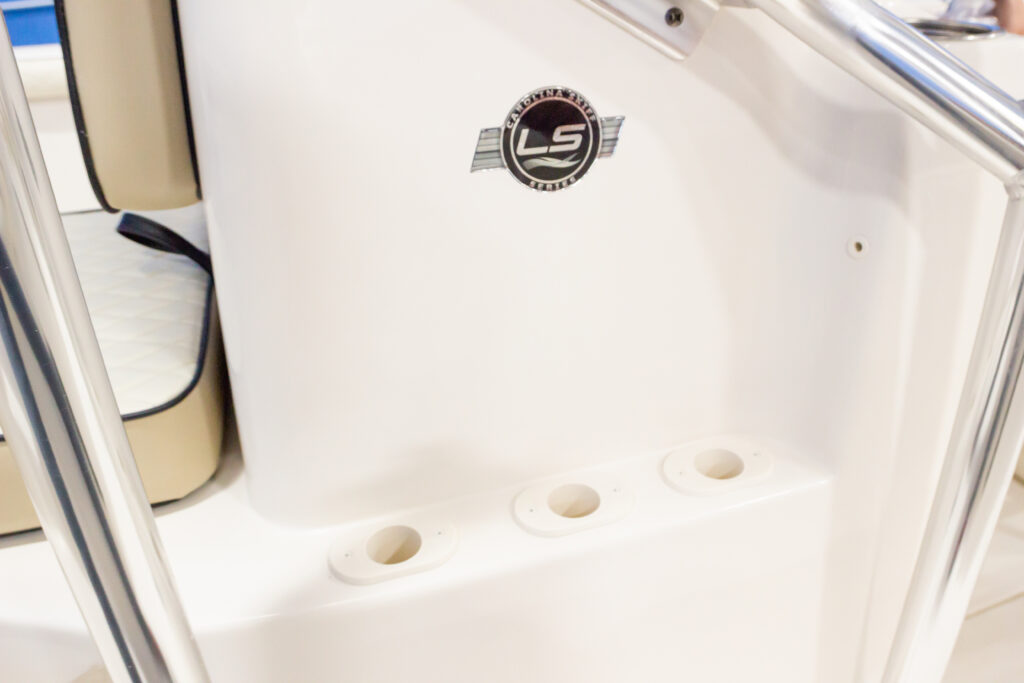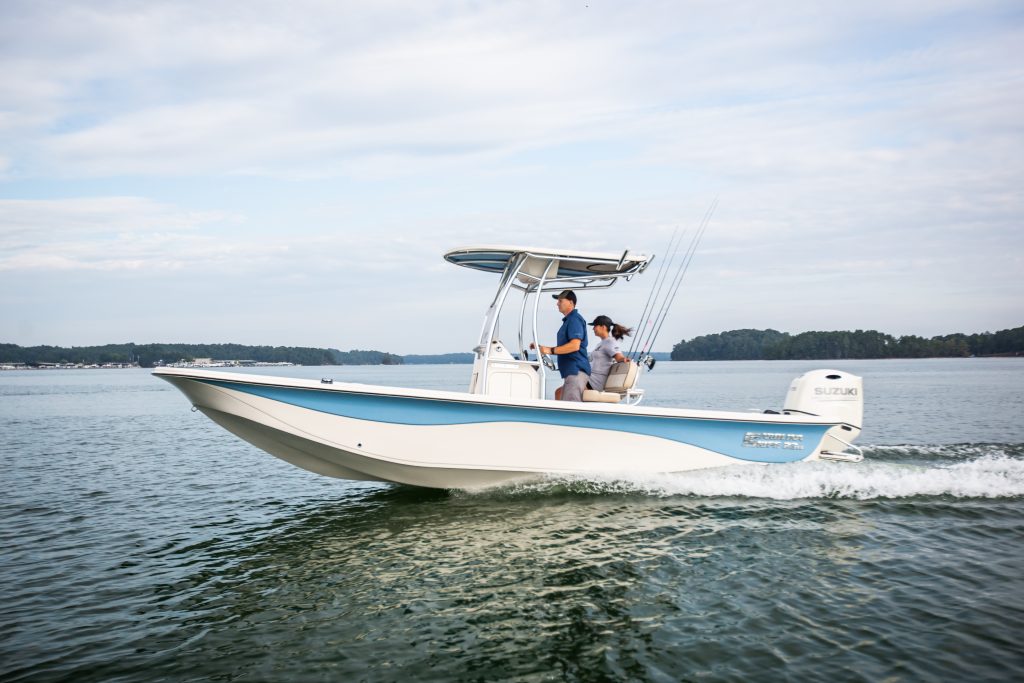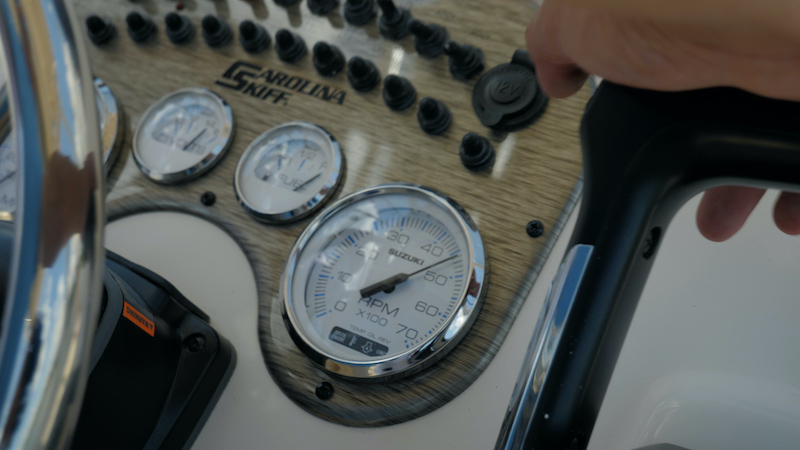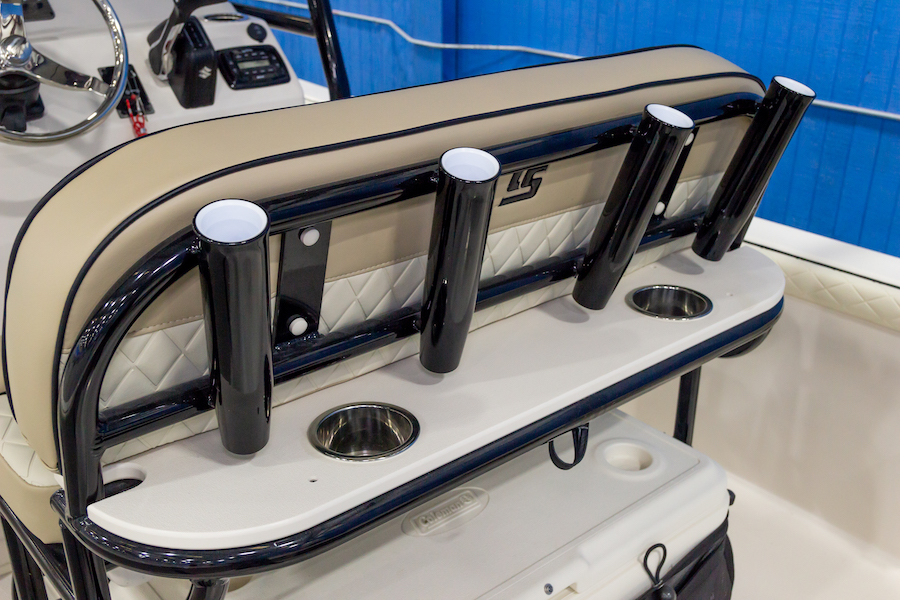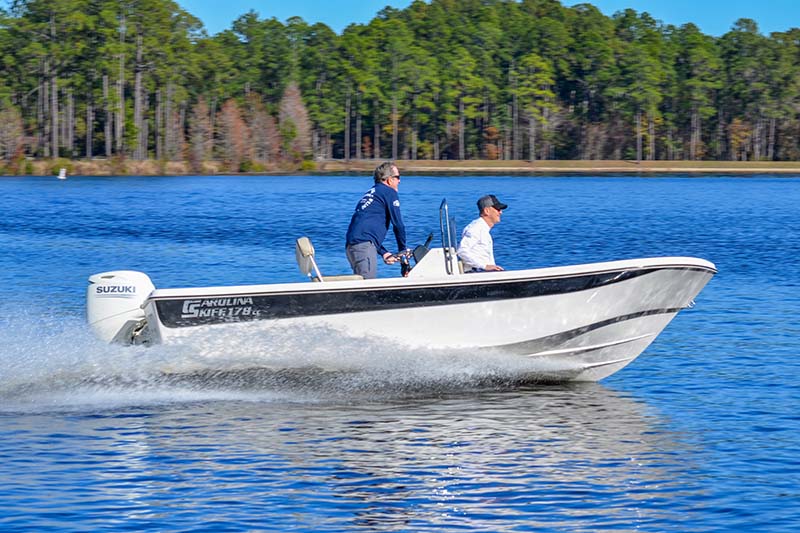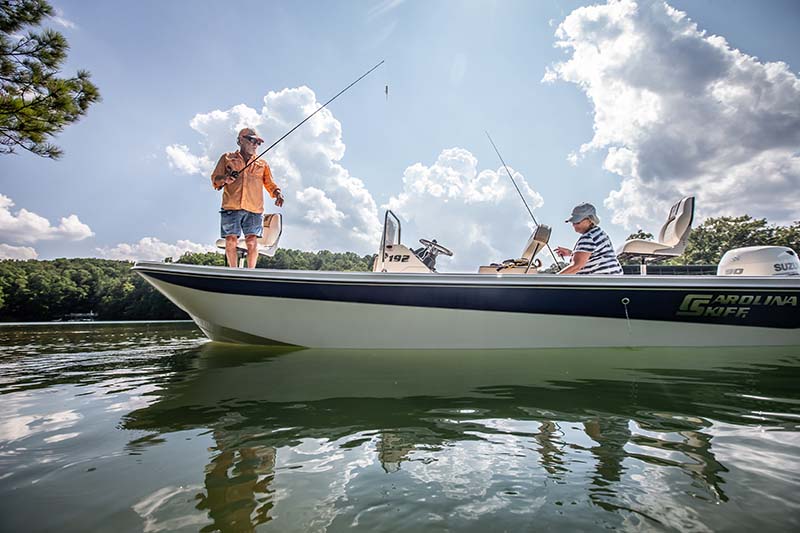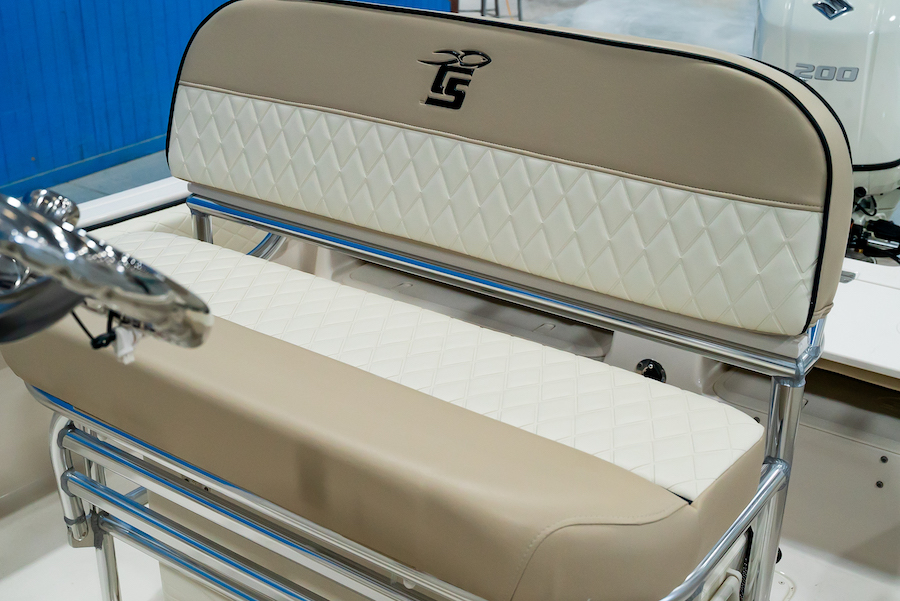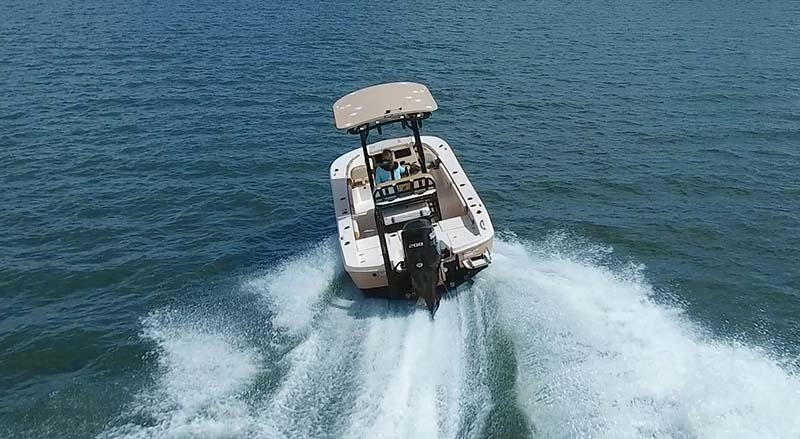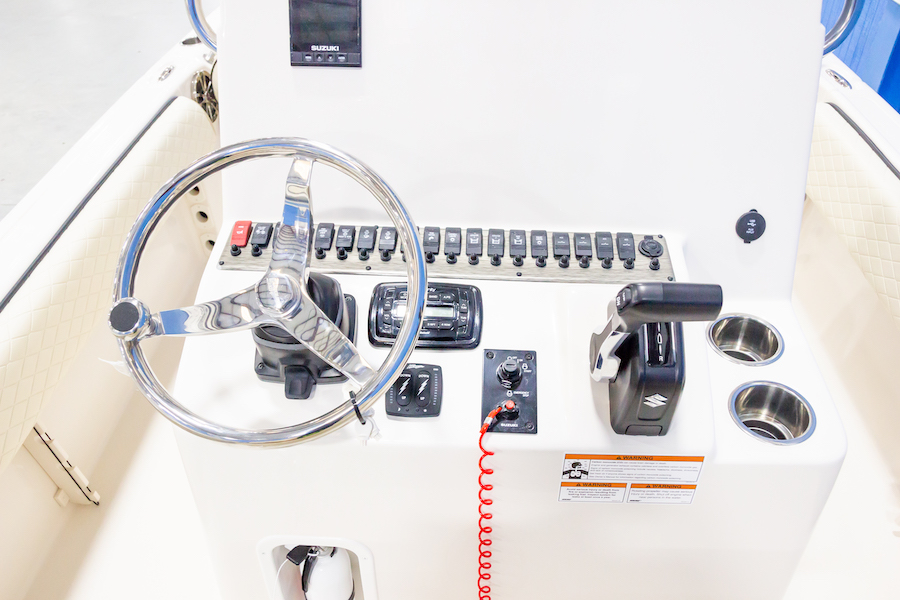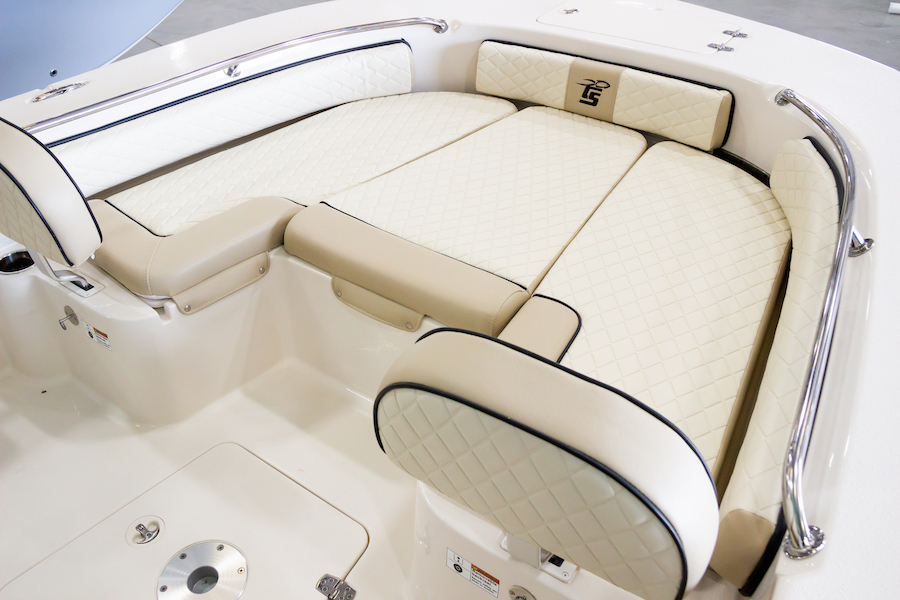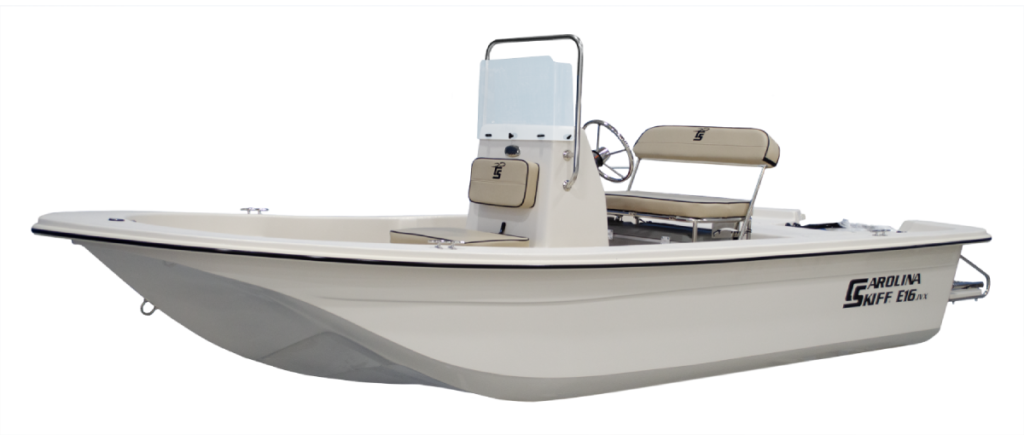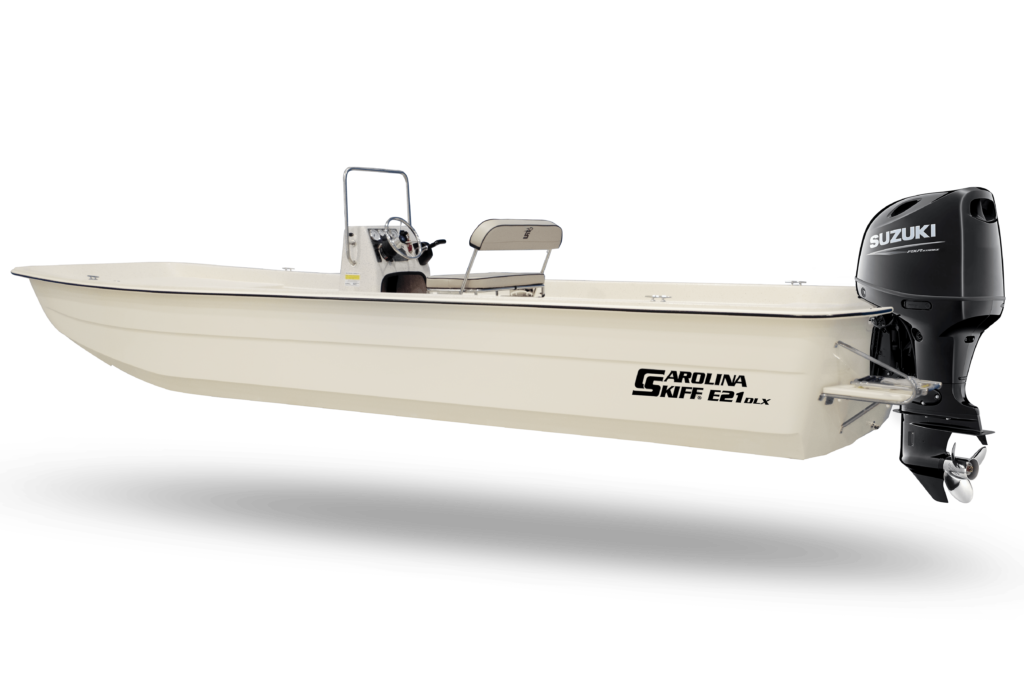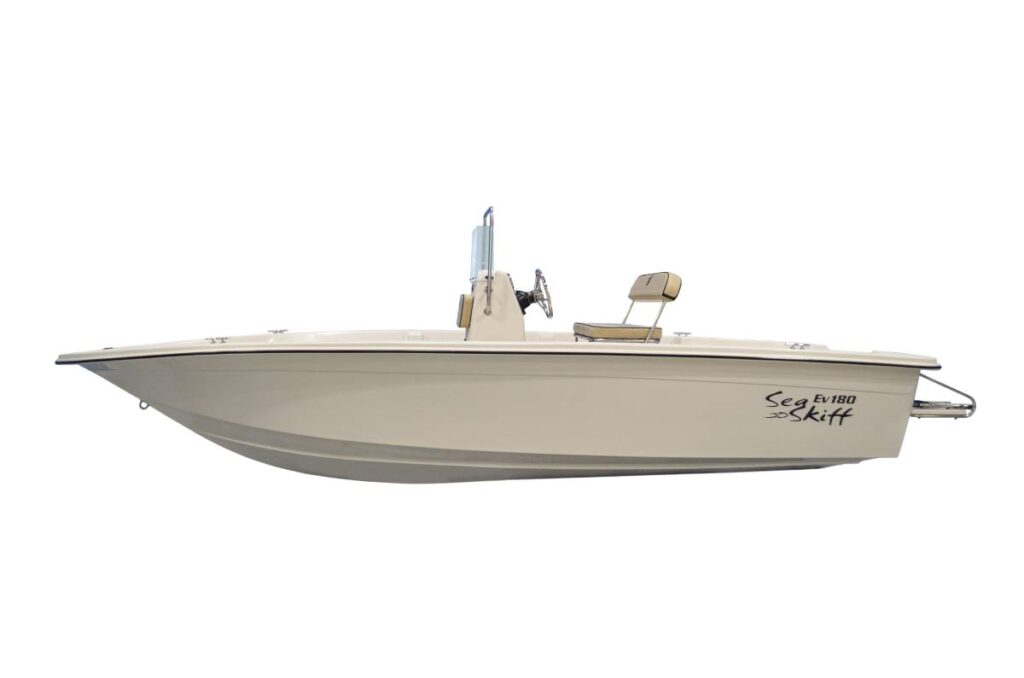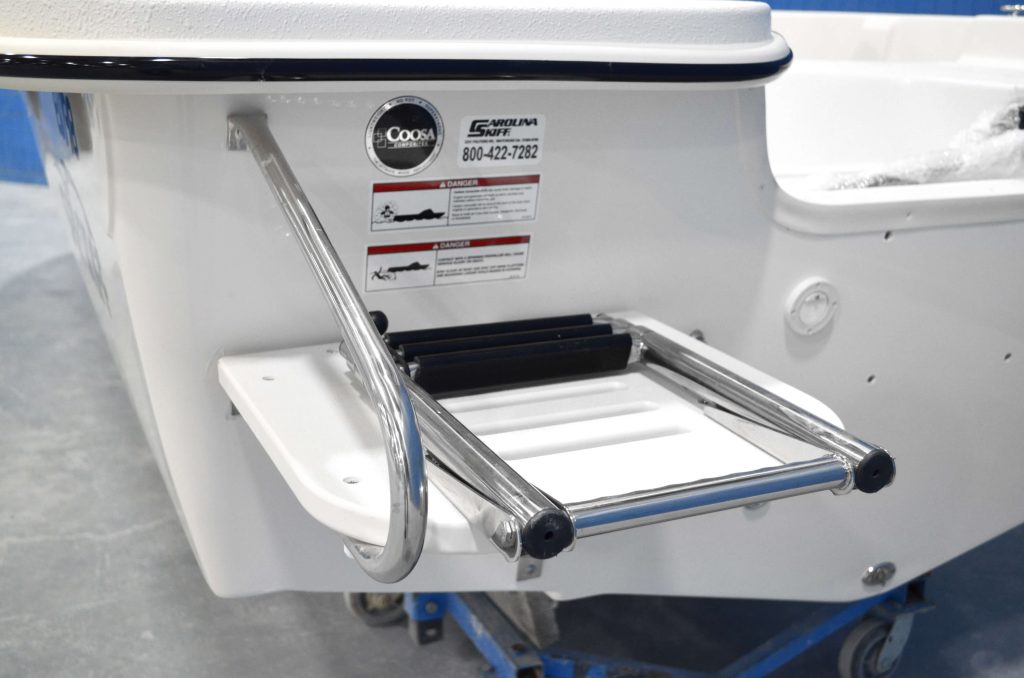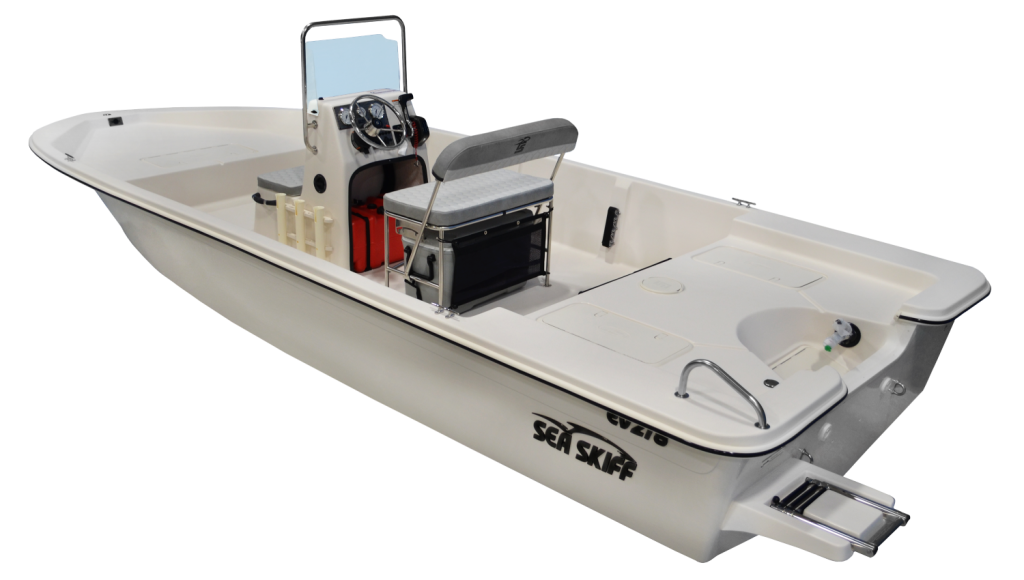Like anything else these days, you can make your fly fishing saltwater game as technical as you wish. Rods, reels, and lines are all high tech. You can also add boats to the high-tech equation.
Flats boats even have a hybrid version called the technical poling skiff. Whatever name you choose the fundamental truth remains. A common skiff was the predecessor to them all.
That is good news if you own a Carolina Skiff and want to access the same inches deep water as the high-tech rigs. Since the beginning, Carolina Skiffs were designed to be lightweight and rugged enough to stand up to the rigors of maneuvering into shallow waters.
Rigging your Carolina Skiff for fly fishing is an easy task. More than likely you already have some of the needed accessories. All it takes is recognizing the fundamental mindset that Carolina Skiffs are designed for virtually any inshore fishing pursuit.
A poling tower might be the most obvious accessory lacking on your skiff. That problem can be easily solved using a sturdy, large capacity rotomolded cooler. Those are sturdy enough, and especially when filled with ice and the contents, to provide safe, steady footing at the stern for standing. If push poling is unnecessary, you can move the high-tech cooler up front to double as a raised casting platform.
With a place to stand you now need a push pole. Choosing the right pole depends on budget, of course, but there are materials you can take into consideration to suit angling needs.
Graphite or carbon fiber is extremely light and the most expensive. Fiberglass poles are more affordable yet weigh more. That makes fiberglass the most logical for the occasional skiff fly fisher. A fiberglass pole can also serve multiple functions, an attribute most skiff owners look for in any boating accessory. Use it to fend off a dock or push off an oyster bar. As for size, a rule of thumb is taking the boat length, adding 3 feet and then tweaking for specific fishing conditions.
You already keep mooring lines and anchor rope on board. Add another line for push pole. You can use it to tie off to double as a boat anchor instead of spooking fish with the real thing. Depending on your needs a 15-foot line is adequate to handle windy conditions when you need to stake off.
Fly line management is another must. Trolling motors, consoles, cleats and other standout accessories can become fly line catchers. Specifically designed to keep line in place are fly line stripping buckets. Some are even collapsible and can be easily stored inside a compartment.
Above all else, keeping the deck tidy and free of obstacles is a must. A towel can at least cover up what can’t be removed, such as the console or a trolling motor.
A top choice for fly fishing in shallow water is the JV Series. With drafts of 3 just 3 inches the 15 JV CC, at 14’8”, and the 17 JV CC, at 16’8,” make the ideal boats for accessing ultra-shallow water.
The JV Series is a small boat that is designed for fishing, cruising and all around fun, pure and simple. Stable, easy to handle and built with 100% composite wood free construction, the J-Series is built to last and make years of memories. The modified shallow V is designed to soften the ride and help keep you dry.
The boats are packed with features in a compact layout. Up front is a front deck with non-skid surface for making casts to spooky fish. Hatch covers keep gear cool and dry at the bow and stern. A comfortable console cushion seat is positioned at the helm. Full instrumentation and a quick disconnect windshield for mounting electronics on the console. Rod holders keep casting outfits at the ready, and you can fish in comfort from two padded swivel seats at bow and stern.
See the full line of Carolina Skiff boats at carolinaskiff.com. With 60 different options and models, you can use the Build A Boat feature. On the website, you can find a dealer, request a catalog and more. Check out the loyal following of Carolina Skiff fans and owners on Facebook.





